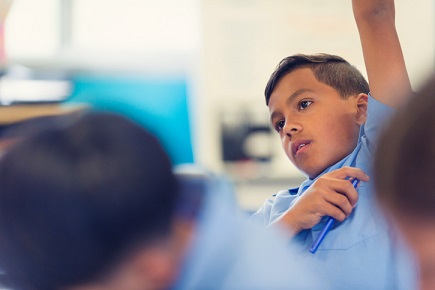
The Federal Government has flagged more teachers in regional and remote areas in the hope of balancing the quality of student outcomes nationwide.
However, it’s yet to be seen if the incentives they are offering will work.
This places the future of Indigenous students in limbo, despite existing funding and programs like Closing the Gap or the National Aboriginal and Torres Strait Islander Curricula Project, which gave rise to the Little J & Big Cuz series.
According to government data there has been no meaningful improvement in any of the states and territories in terms of Indigenous students’ attendance rates. In the Northern Territory, attendance rates even fell from 70.2% in 2014 to 66.2% in 2017.
Dr Tracy Woodroffe, a lecturer in Indigenous Knowledges at Charles Darwin University’s College of Indigenous Futures, Arts and Society, said that there is a need for teachers to receive pre-service training on Indigenous knowledge.
With Indigenous people making up 30% of the Territory’s population, this would mean sizeable populations of students in regional and remote schools need to have a different knowledge system than the one being implemented in urban schools.
“This goes back to what kids learn at school,” Dr Woodroffe said.
“The current curriculum doesn’t do a good job of building students’ knowledge about Indigenous history and a worse job at teaching Indigenous culture.”
Dr Woodroffe said this would mean that metropolitan teachers who are brought in or move to remote or regional schools with an Indigenous student population would spell trouble.
“Teachers turn up in the Territory quite often with little or no experience in working with Indigenous people,” she said.
“The school system has equipped them with scant knowledge about a significant cultural group that they will be teaching, and their teacher training hasn’t given them any more either.”
Dr Woodroffe isn’t the only person in the academe to raise this issue.
Curriculum overhaul needed
The University of Sydney has also recognised the need to make school curriculums adjust to the needs of Indigenous students.
The University recently held a lecture with local and international scholars, policymakers and leading practitioners in Māori and Aboriginal education.
Dr Cathie Burgess, a senior lecturer in Aboriginal Studies and Aboriginal Education at the Sydney School of Education and Social Work, said they want to encourage the development of education partnerships between educational institutions and communities in a local and international setting.
“Governments have been surprisingly frank about the failure of their Closing The Gap policies to deliver better health, education and employment outcomes for Aboriginal and Torres Strait Islander people,” Dr Burgess said.
“Despite this, and hundreds of studies on the subject, much of what we hear or think we know about Indigenous education remains mired in myths and legends.”
The conclusion drawn from 53 studies on teaching methods for Indigenous students, as analysed by Dr Burgess and her Aboriginal Voice Project Team, found that racism in schools profoundly impacts Indigenous students’ identities, self-esteem and outcomes.
While the use of language and culture are critical to improving Indigenous student outcomes, there is no ‘one-size-fits-all’ solution.
Dr Greg Vass, the event co-organiser and a lecturer at Griffith University, said that aside from requiring a “whole-school approach”, improving Indigenous education requires schools to collaborate with the students’ families.
Other keynote speakers who were present in the symposium were University of Waikato Professor Mere Berryman and three award-winning New Zealand-based principals.


